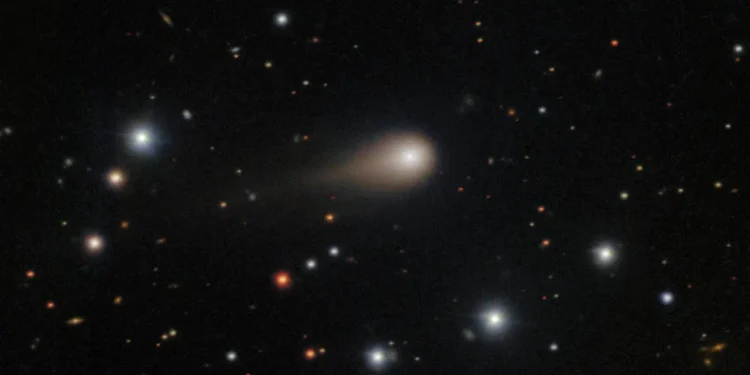Astronomers across the globe are electrified with anticipation of the close flyby and extraordinary astronomical happening, 3I/ATLAS, a peculiar guest from the outer realms of our Solar System. Declared the first natural interstellar comet, 3I/ATLAS presents a once-in-a-lifetime opportunity for astronomers to examine ancient material created around other suns, revealing insights into how planetary systems are composed across far-off environments that are unlike ours.
A Rare Visitor From Interstellar Space
The first report on the discovery of 3I/ATLAS appeared on July 1, 2025. It was detected by the Asteroid Terrestrial-impact Last Alert System telescope in Chile. The asteroid immediately attracted the attention of scientists due to its unprecedented speed of about 61 kilometers per second and its unusually hyperbolic orbit. Later observations from major space observatories finally confirmed the object’s origin outside the Solar System, and it was only the third such object that confirmed this fact for sure after 1I/’ Oumuamua and 2I/Borisov. Unlike asteroids and comets on bound orbits found within the solar system, ATLAS 3 follows an unbound orbit and is moving too fast to be part of our solar system. For the first time in history, astronomers had the opportunity to observe the substances that formed in other star systems directly.
Confirmation as a Comet
This uncertainty was quickly eliminated because 3I/ATLAS was found to harbor a coma, or a bright cloud of gas and dust, with a solid icy nucleus at the center; the coma consisted of a coma that surrounds the solid icy nucleus, such as a halo that encapsulates the solid core, and is observed in comets. Comets become active or exhibit cometary activity when a solid icy nucleus creates a coma and a tail.
The comet 3I/ATLAS exhibits cometary activity due to the sublimation or transformation of ices on the surface, which is releasing the gas and dust from the coma into space. Hubble Space Telescope images allowed the nucleus to be estimated at less than 1 kilometer in diameter. The James Webb Space Telescope shows that the coma is abnormally rich in carbon dioxide and contains some water ice, carbon monoxide, and other molecules. Additionally, decomposition of the cyan complex gas and atomic nickel vapor was observed, demonstrating that 3I/ATLAS is indeed a real comet composed of ordinary natural components.
Scientific Significance
The 3I/ATLAS study provides astronomers with valuable insights into the materials produced around different stars. Due to the dust’s cross-section and the composition of the coma, this object appears to be a combination of icy and dark material, which can be characterized as a trans-Neptunian object.
The strange, atypical negative polarization pattern of the comet indicates exotic properties of the dust, expanding our imagination of cometary physics in our space. The comet has made its perihelion, the closest point to the Sun, approximately on October 29, 2025, at approximately 1.4 astronomical units, and will not pass close to Earth – it will pass safely at 1.8 AU in December 2025. During the passage, it became particularly bright, still too faint to observe with the naked eye, and thus, we require further observations with telescopes.
Alien Technology Speculations
The natural nature of comet 3I/ATLAS is proven beyond doubt by the scientific community. At the same time, small groups of people, such as Harvard astronomer Avi Loeb, have thrown in the unfounded idea that 3I/ATLAS might be an alien artifact.
However, the resulting data from the numerous recorded observations is enough to reject these groups. To this day, NASA officially refers to the natural comet with regular cometary activity, as noted by the University of Maryland Department of Astronomy. 3I/ATLAS is a unique opportunity for humanity to test the boundaries of our event horizon once again and to receive new materials and data to explore space and its origins.


